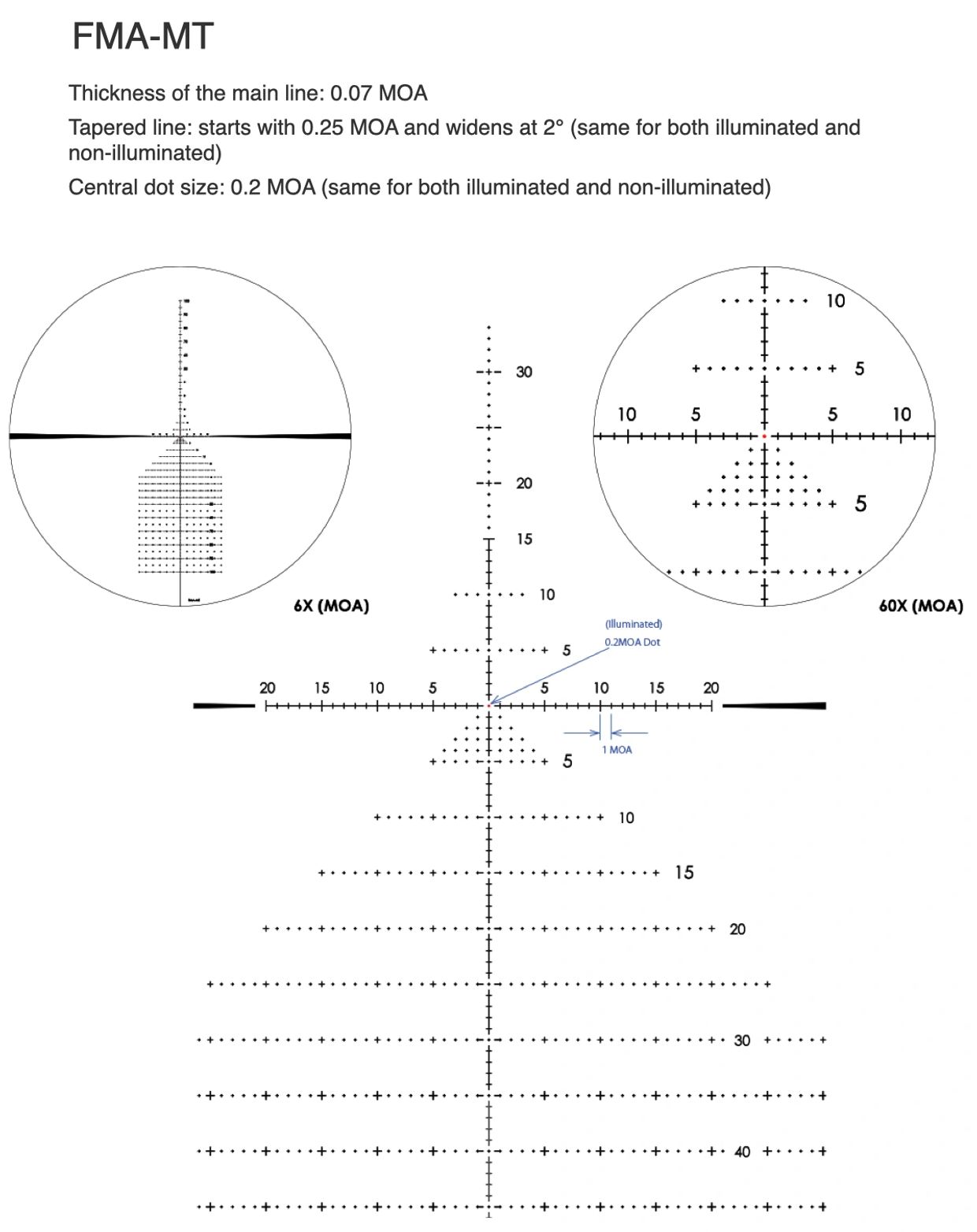FIRST FOCAL PLANE (FFP) RETICLES

The main feature of the First Focal Plane Reticle design, also known as FFP, is that the reticle size "increases" or "decreases" as you turn the magnification up or down. This occurs in such a way that the reticle always covers the same percentage of the target, either in MOA or MILS. When you increase the magnification, the target appears larger and so do the lines of the reticle. This also applies to the distance between any vertical or horizontal hash marks.
Another important feature of this reticle design is that the point of aim (POA) does not change over the entire zoom range.
Generally FFP reticles are thicker than Second Focal Plane reticles when at maximum magnification. They need to be so that you can still see the reticle line at minimum magnification; as the reticle line gets thinner as you reduce the magnification. Any elevation and windage hash marks also get physically closer together as you view them in the scope however on the target the distance between the hash marks consistently covers the same MOA or Mils on the target.
Therefore, the advantage of a FFP scope is that if your hash marks are one MOA or one MIL apart on the target at any magnification. Whereas a SFP scope the hash marks are only one MOA or one MIL apart on the target at one designated magnification.
The special reticle design in the March scope allows target acquisition quickly at both low and high magnification.
Click HERE to get to our manufacturer's FFP Reticles page, where you will find the collection of reticles currently available for each scope category. Once over there, click on the reticle thumbnail to see the corresponding enlarged images with detailed information.

FMA-MT Reticle

FML-PDKI Tree Reticle
Horizontal line and vertical line are both 0.04MIL thick with a center 0.075MIl dot.
FML Reticle (in MILs)

FML (in MILs) assembled on 3x-24x42mm & 52mm
0.1 MIL floating centre dot and 0.07 MIL crosshairs with vertical and horizontal hashes.
These hashes are placed in 0.5 MIL increment.
FML-1 Reticle (in MILs)

FML-1 (in MILs) assembled on 3x-24x42mm & 52mm
0.1 MIL floating center dot and 0.03 MIL crosshairs with vertical and horizontal hashes. These hashes are placed in 0. 5MIL increment.
FML-MT (tree) Reticle (in MILs)

FML-MT (tree) Reticle (in MILs) assembled on March GENESIS 6-60x56mm NON-ILLUMINATED
Thickness of the main line: 0.02MIL, tapered line: starts with 0.1MIL and widens at 2°
FML-TR1 (tree) Reticle in MILs

FML-TR1 (tree) Reticle in MILs assembled on March GENESIS 6-60x56mm
New competition oriented First Focal Plane reticle is designed for precise holdover without obscuring the sight picture. In the illuminated version centre dot and cross are illuminated with .2 mrad and .5 mrad hash marks throughout.
FML-T1 (tree) Reticle in MILs

FML-T1 (tree) in MILs assembled on 3x-24x42mm & 52mm
FML-TR1H Reticle (in MILs)

FML-TR1H (in MILs) assembled on 3x-24x42mm & 52mm
This reticle is specially designed for hunters. Quadrant in the center will assist you with quick aiming.
0.1 MIL floating center dot and 0.07 MIL crosshairs with vertical and horizontal hashes.